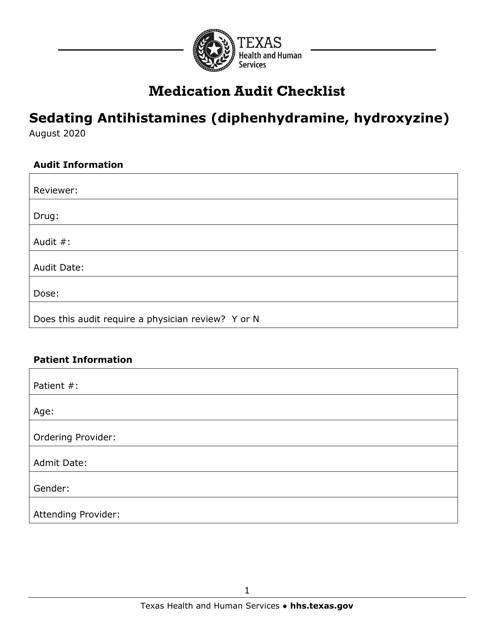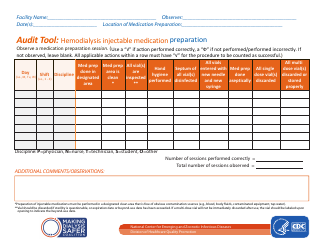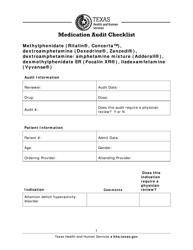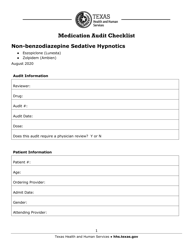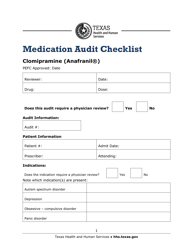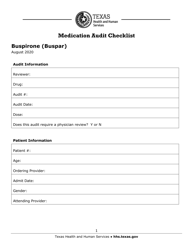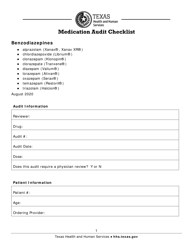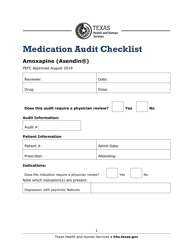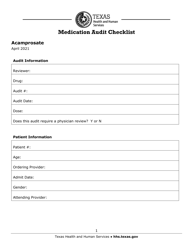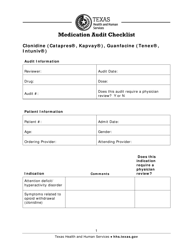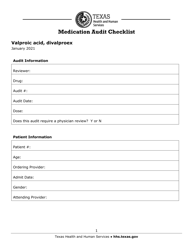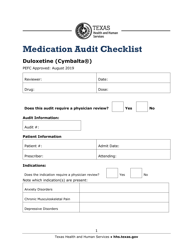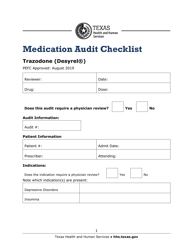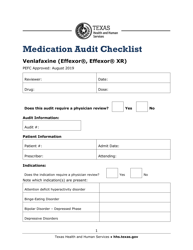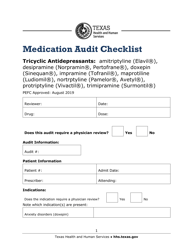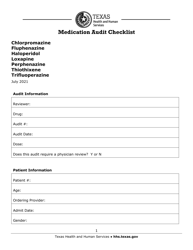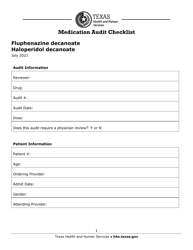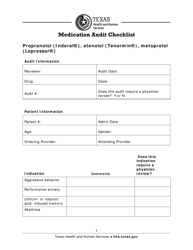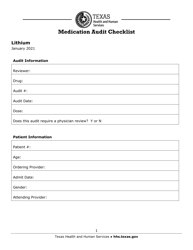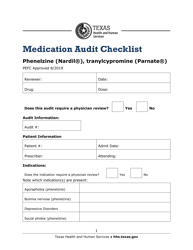Medication Audit Checklist - Sedating Antihistamines (Diphenhydramine, Hydroxyzine) - Texas
Medication Audit Checklist - Sedating Antihistamines (Diphenhydramine, Hydroxyzine) is a legal document that was released by the Texas Health and Human Services - a government authority operating within Texas.
FAQ
Q: What is a medication audit checklist?
A: A medication audit checklist is a tool used to assess compliance with medication-related guidelines and regulations.
Q: What are sedating antihistamines?
A: Sedating antihistamines are a type of medication commonly used to relieve symptoms of allergies, such as itching, sneezing, and runny nose.
Q: What are examples of sedating antihistamines?
A: Some examples of sedating antihistamines include diphenhydramine and hydroxyzine.
Q: What is diphenhydramine?
A: Diphenhydramine is an antihistamine medication that is commonly used to treat allergies and promote sleep.
Q: What is hydroxyzine?
A: Hydroxyzine is an antihistamine medication that is used to treat itching caused by allergies and certain skin conditions, as well as to relieve anxiety and promote sleep.
Q: Why are sedating antihistamines included in a medication audit checklist?
A: Sedating antihistamines are included in a medication audit checklist because they have sedative effects and can cause drowsiness, which may pose risks to patient safety.
Q: What is the purpose of a medication audit checklist for sedating antihistamines?
A: The purpose of a medication audit checklist for sedating antihistamines is to ensure that appropriate prescribing, monitoring, and documentation practices are followed to minimize the risks associated with these medications.
Q: Who uses a medication audit checklist?
A: A medication audit checklist is typically used by healthcare professionals, such as doctors, nurses, and pharmacists, as well as regulatory bodies and organizations involved in medication safety.
Q: What should be considered during a medication audit for sedating antihistamines?
A: During a medication audit for sedating antihistamines, factors such as appropriate indications, dosage, patient characteristics, monitoring for side effects, and documentation should be considered.
Form Details:
- Released on August 1, 2020;
- The latest edition currently provided by the Texas Health and Human Services;
- Ready to use and print;
- Easy to customize;
- Compatible with most PDF-viewing applications;
- Fill out the form in our online filing application.
Download a printable version of the form by clicking the link below or browse more documents and templates provided by the Texas Health and Human Services.
